Figures & data
Figure 1. A conceptual model for the relationship between anti-establishment beliefs and support for three different ways of social media content governance with political ideology as the moderator.

Figure 2. A conceptual model for the relationship between belief in the government’s role in the market and support for government regulation with political ideology as the moderator.
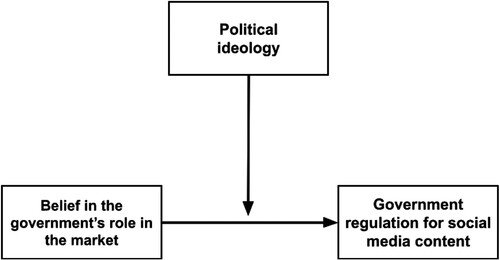
Table 1. Recoding support for content moderation.
Table 2. Recoding support for individual responsibility.
Table 3. Correlations among and descriptive statistics for all variables.
Table 4. Regression model testing the relationship between anti-establishment attitudes and support for government regulation of social media content (Model 1, H1) and the moderating effect of political ideology (Model 2, H4a).
Table 5. Conditional effects model of anti-establishment attitudes on support for government regulation of social media content at values of the moderator (Political Ideology) (H4a).
Table 6. OLS regression model testing the relationship between anti-establishment beliefs and support for individual responsibility for social media content (Model 1, H2) and the moderating effect of political ideology (Model 2, H4b).
Table 7. Conditional effects model of anti-establishment attitudes on support for individual responsibility for social media content at values of the moderator (Political Ideology) (H4b).
Table 8. Regression model testing the relationship between anti-establishment beliefs and support for social media company responsibility for social media content (Model 1, H3) and the moderating effect of political ideology (Model 2, H4c).
Figure 3. A statistical model for the moderation analysis examining the relationship between anti-establishment beliefs and support for government regulation with political ideology as the moderator.
Note: Unstandardized coefficients of the model are reported with standard errors in parentheses. Covariates included age, gender, race, education, and internet use. Model summary: −2LL 12596.73, ModelLL 328.62, p < .001. Model goodness of ft: χ2 =74.915; df =1, p < .001; pseudo R2= 4.7%.
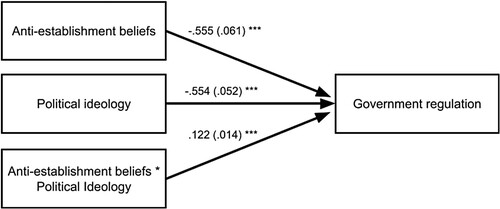
Figure 4. Conditional effects of anti-establishment attitudes on support for government regulation at different values of the moderator (political ideology).
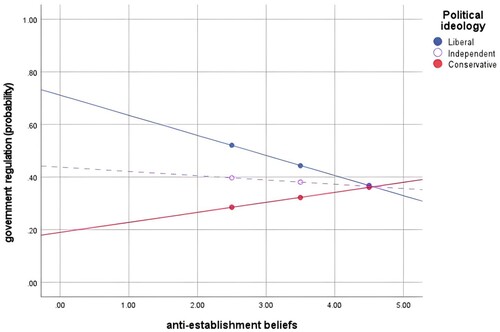
Figure 5. A statistical model for the moderation analysis examining the relationship between anti-establishment beliefs and support for individual responsibility with political ideology as the moderator.
Note: Unstandardized coefficients of the model are reported with standard errors in parentheses. Covariates included age, gender, race, education, and internet use. Model summary: R2 31%, F(8,9231) = 518.50, p < .001. R2 change for unconditional interaction = 0.04%, F(1,9231) = 5.1836, p = 0.23.
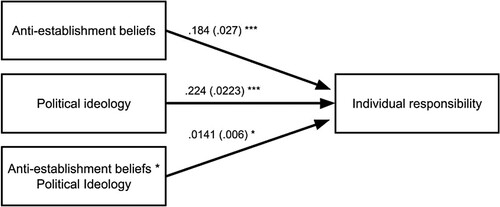
Figure 6. Conditional effects of anti-establishment attitudes on support for individual responsibility at different values of the moderator (political ideology).
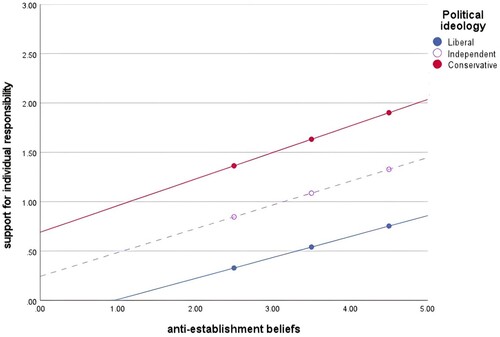
Figure 7. A statistical model for the moderation analysis examining the relationship between anti-establishment beliefs and support for social media companies’ content moderation with political ideology as the moderator.
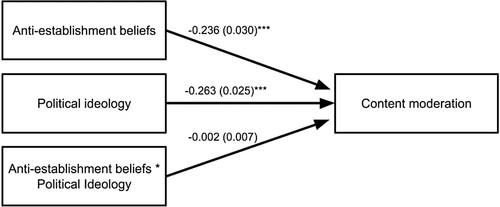
Figure 8. A statistical model for the moderation analysis examining the relationship between belief in the government’s role in the market and support for government regulation with political ideology as the moderator.
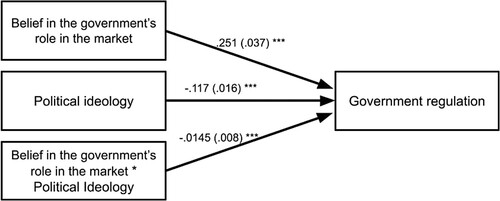
Figure 9. Conditional effects of belief in the government’s role in the market on support for government regulation at different values of the moderator (political ideology).

Table 9. Regression model testing the relationship between beliefs in the role of government and support for government regulation of social media content (Model 1, H5) and the moderating effect of political ideology (Model 2, H6).
Table 10. Conditional effects model of beliefs in the role of government on support for government regulation of social media content at values of the moderator (political ideology).
Table 11. Comparison between different models for RQ3.
Data availability statement
Raw data were generated at Gallup. Derived data supporting the findings of this study are available from Gallup ([email protected]) on request.
